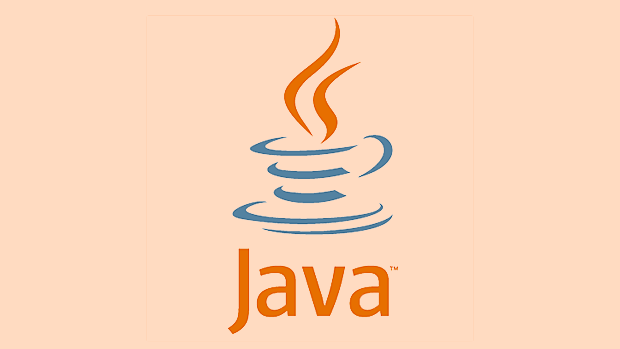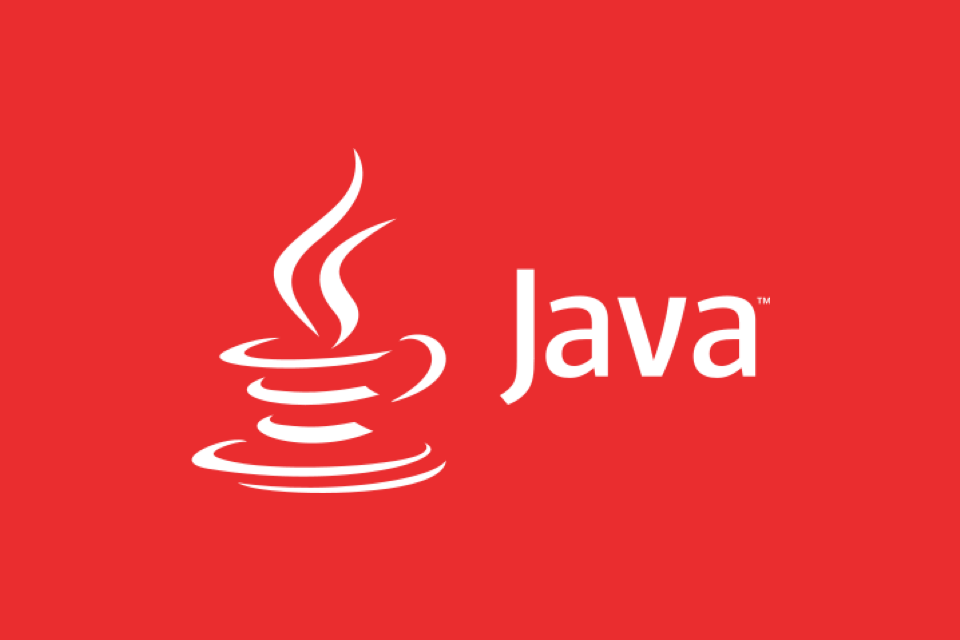Understanding Java Classloader Hierarchy
The core of the Java class loading mechanism is the hierarchy of the class loader and the parent delegation model. 1. Bootstrap ClassLoader is responsible for loading JVM core classes; 2. Extension ClassLoader loads Java extension class library; 3. Application ClassLoader loads classes on the application classpath. Class loading follows the parent delegation model, that is, class loading requests will be delegated to the parent class loader first, and subclasses will only attempt to load when the parent class cannot be loaded, so as to avoid duplicate loading of classes and ensure security. Custom class loaders can be used in hot deployment, modular loading and other scenarios. They usually inherit ClassLoader and override the findClass() method. If you need to break the parent delegation, you can override loadClass(). In addition, class loaders implement class isolation in web containers, and thread context class loaders are used for specific scenarios such as JDBC driver loading. Understanding the class loading mechanism helps troubleshoot class conflicts, optimize plug-in systems and hot deployment solutions.

Java's class loading mechanism is a very core part of the JVM, and the hierarchy of the class loader (ClassLoader) is the key. Understanding the hierarchical relationship of ClassLoader can help troubleshoot class loading problems, avoid class conflicts, and can even come in handy when developing plug-in systems or hot deployment solutions.

The three major roles of Java ClassLoader
There is not only one class loader in Java, but three main built-in class loaders that form a parent-child hierarchy:
- Bootstrap ClassLoader : is responsible for loading the core classes that come with the JVM, such as
java.lang.Object, which are usually located inrt.jar. It is implemented by C, not a Java class. - Extension ClassLoader : The extension class library responsible for loading Java, which is generally located in
jre/lib/extdirectory or the location specified byjava.ext.dirs. - Application ClassLoader (also known as System ClassLoader) : is responsible for loading classes on the application classpath and is the classloader we deal with most frequently.
A "tree-like" structure is formed between these three class loaders. Bootstrap is the root node, Extension is its child node, and Application is also the child node of Extension.

How does the parent delegation model work?
Java class loading follows a mechanism called the "Parent Delegation Model". Simply put, when a class loader receives a request to load a class, it does not load it first, but delegates the request to its parent class loader to complete it until the top-level Bootstrap ClassLoader.
The current class loader attempts to load only when the parent class loader cannot complete the loading task (such as not finding the corresponding class).

There are two main benefits of this mechanism:
- Avoid duplicate class loading: The same class will only be loaded once and will be done by as advanced class loaders as possible.
- Ensure the security of the class: prevent users from impersonating classes in the core class library. For example, you wrote a
java.lang.String, but because of the existence of parent delegation, the JVM will prioritize the use of Bootstrap loaded version to avoid security risks.
For example: When you use new String() in your code, the JVM will load java.lang.String through the Application ClassLoader, but it will first hand over the task to its parent class Extension ClassLoader, and then hand over it to the Bootstrap ClassLoader. Finally, Bootstrap successfully loaded this class from rt.jar, and the whole process ended.
Common uses and precautions for custom class loaders
Sometimes we need to customize ClassLoader, such as implementing hot deployment, modular loading, encrypted class files, etc. Custom class loaders generally inherit java.lang.ClassLoader and override findClass() method.
It should be noted that if you want to follow the parent delegation model, don’t rewrite loadClass() method casually; if you want to break this model (such as OSGi or some hot update frameworks), you can implement your own loading logic by rewriting loadClass() .
Several key points:
- If you want to implement class isolation (such as different modules load their respective classes without interfering with each other), you need to design the relationship between class loaders.
- In a web container (such as Tomcat), each web application has its own class loader, which can avoid class conflicts between different applications.
- Use the Thread Context ClassLoader to bypass the default class loader chain in some scenarios, such as the JDBC driver will be used when loading.
Let's summarize
The hierarchy of class loaders and parent delegation mechanism are one of the important foundations of the Java platform. Although we do not need to operate ClassLoader directly, understanding this mechanism can help us locate problems faster when encountering problems such as class loading exceptions and class conflicts. At the same time, in some advanced application scenarios, rational use of class loading mechanism can also bring flexibility and scalability.
Basically all is it, not complicated but it is easy to ignore details.
The above is the detailed content of Understanding Java Classloader Hierarchy. For more information, please follow other related articles on the PHP Chinese website!

Hot AI Tools

Undress AI Tool
Undress images for free

Undresser.AI Undress
AI-powered app for creating realistic nude photos

AI Clothes Remover
Online AI tool for removing clothes from photos.

Clothoff.io
AI clothes remover

Video Face Swap
Swap faces in any video effortlessly with our completely free AI face swap tool!

Hot Article

Hot Tools

Notepad++7.3.1
Easy-to-use and free code editor

SublimeText3 Chinese version
Chinese version, very easy to use

Zend Studio 13.0.1
Powerful PHP integrated development environment

Dreamweaver CS6
Visual web development tools

SublimeText3 Mac version
God-level code editing software (SublimeText3)

Hot Topics
 What is the `enum` type in Java?
Jul 02, 2025 am 01:31 AM
What is the `enum` type in Java?
Jul 02, 2025 am 01:31 AM
Enums in Java are special classes that represent fixed number of constant values. 1. Use the enum keyword definition; 2. Each enum value is a public static final instance of the enum type; 3. It can include fields, constructors and methods to add behavior to each constant; 4. It can be used in switch statements, supports direct comparison, and provides built-in methods such as name(), ordinal(), values() and valueOf(); 5. Enumeration can improve the type safety, readability and flexibility of the code, and is suitable for limited collection scenarios such as status codes, colors or week.
 What is the interface segregation principle?
Jul 02, 2025 am 01:24 AM
What is the interface segregation principle?
Jul 02, 2025 am 01:24 AM
Interface Isolation Principle (ISP) requires that clients not rely on unused interfaces. The core is to replace large and complete interfaces with multiple small and refined interfaces. Violations of this principle include: an unimplemented exception was thrown when the class implements an interface, a large number of invalid methods are implemented, and irrelevant functions are forcibly classified into the same interface. Application methods include: dividing interfaces according to common methods, using split interfaces according to clients, and using combinations instead of multi-interface implementations if necessary. For example, split the Machine interfaces containing printing, scanning, and fax methods into Printer, Scanner, and FaxMachine. Rules can be relaxed appropriately when using all methods on small projects or all clients.
 Asynchronous Programming Techniques in Modern Java
Jul 07, 2025 am 02:24 AM
Asynchronous Programming Techniques in Modern Java
Jul 07, 2025 am 02:24 AM
Java supports asynchronous programming including the use of CompletableFuture, responsive streams (such as ProjectReactor), and virtual threads in Java19. 1.CompletableFuture improves code readability and maintenance through chain calls, and supports task orchestration and exception handling; 2. ProjectReactor provides Mono and Flux types to implement responsive programming, with backpressure mechanism and rich operators; 3. Virtual threads reduce concurrency costs, are suitable for I/O-intensive tasks, and are lighter and easier to expand than traditional platform threads. Each method has applicable scenarios, and appropriate tools should be selected according to your needs and mixed models should be avoided to maintain simplicity
 Differences Between Callable and Runnable in Java
Jul 04, 2025 am 02:50 AM
Differences Between Callable and Runnable in Java
Jul 04, 2025 am 02:50 AM
There are three main differences between Callable and Runnable in Java. First, the callable method can return the result, suitable for tasks that need to return values, such as Callable; while the run() method of Runnable has no return value, suitable for tasks that do not need to return, such as logging. Second, Callable allows to throw checked exceptions to facilitate error transmission; while Runnable must handle exceptions internally. Third, Runnable can be directly passed to Thread or ExecutorService, while Callable can only be submitted to ExecutorService and returns the Future object to
 Best Practices for Using Enums in Java
Jul 07, 2025 am 02:35 AM
Best Practices for Using Enums in Java
Jul 07, 2025 am 02:35 AM
In Java, enums are suitable for representing fixed constant sets. Best practices include: 1. Use enum to represent fixed state or options to improve type safety and readability; 2. Add properties and methods to enums to enhance flexibility, such as defining fields, constructors, helper methods, etc.; 3. Use EnumMap and EnumSet to improve performance and type safety because they are more efficient based on arrays; 4. Avoid abuse of enums, such as dynamic values, frequent changes or complex logic scenarios, which should be replaced by other methods. Correct use of enum can improve code quality and reduce errors, but you need to pay attention to its applicable boundaries.
 Understanding Java NIO and Its Advantages
Jul 08, 2025 am 02:55 AM
Understanding Java NIO and Its Advantages
Jul 08, 2025 am 02:55 AM
JavaNIO is a new IOAPI introduced by Java 1.4. 1) is aimed at buffers and channels, 2) contains Buffer, Channel and Selector core components, 3) supports non-blocking mode, and 4) handles concurrent connections more efficiently than traditional IO. Its advantages are reflected in: 1) Non-blocking IO reduces thread overhead, 2) Buffer improves data transmission efficiency, 3) Selector realizes multiplexing, and 4) Memory mapping speeds up file reading and writing. Note when using: 1) The flip/clear operation of the Buffer is easy to be confused, 2) Incomplete data needs to be processed manually without blocking, 3) Selector registration must be canceled in time, 4) NIO is not suitable for all scenarios.
 How Java ClassLoaders Work Internally
Jul 06, 2025 am 02:53 AM
How Java ClassLoaders Work Internally
Jul 06, 2025 am 02:53 AM
Java's class loading mechanism is implemented through ClassLoader, and its core workflow is divided into three stages: loading, linking and initialization. During the loading phase, ClassLoader dynamically reads the bytecode of the class and creates Class objects; links include verifying the correctness of the class, allocating memory to static variables, and parsing symbol references; initialization performs static code blocks and static variable assignments. Class loading adopts the parent delegation model, and prioritizes the parent class loader to find classes, and try Bootstrap, Extension, and ApplicationClassLoader in turn to ensure that the core class library is safe and avoids duplicate loading. Developers can customize ClassLoader, such as URLClassL
 Exploring Different Synchronization Mechanisms in Java
Jul 04, 2025 am 02:53 AM
Exploring Different Synchronization Mechanisms in Java
Jul 04, 2025 am 02:53 AM
Javaprovidesmultiplesynchronizationtoolsforthreadsafety.1.synchronizedblocksensuremutualexclusionbylockingmethodsorspecificcodesections.2.ReentrantLockoffersadvancedcontrol,includingtryLockandfairnesspolicies.3.Conditionvariablesallowthreadstowaitfor







